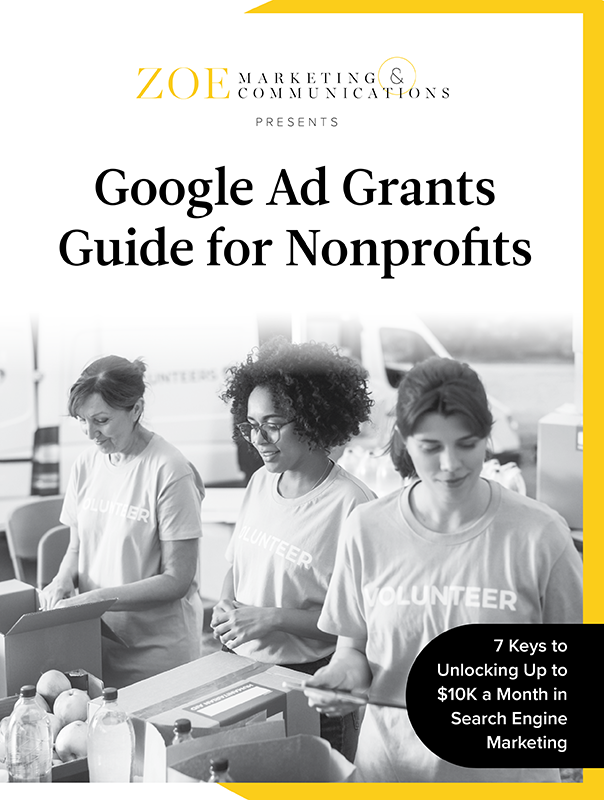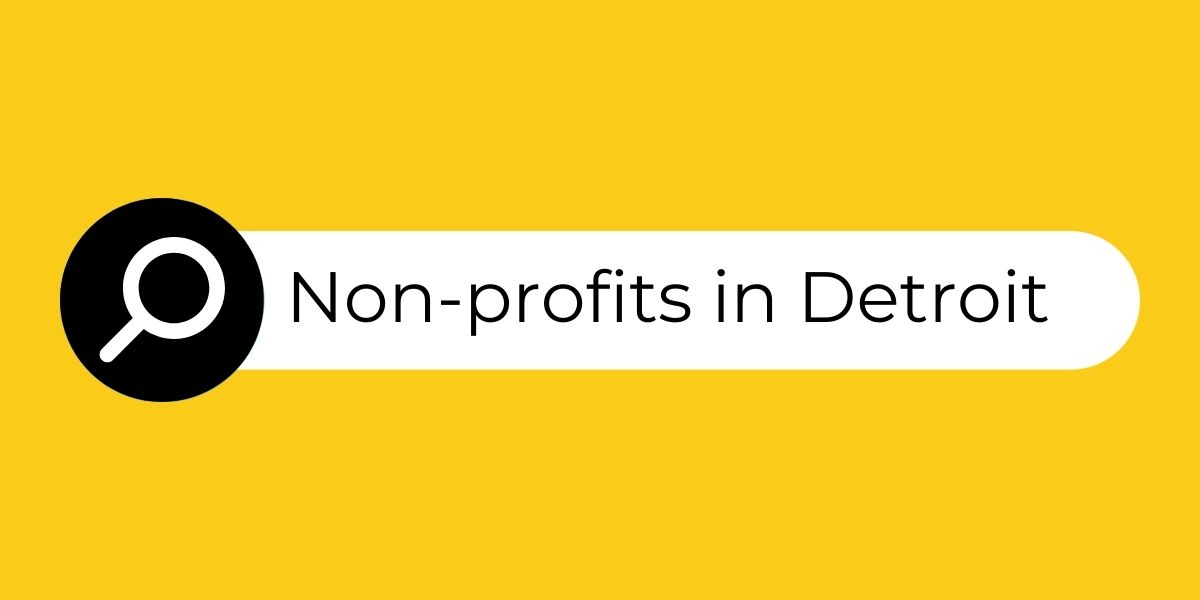
Download Your Google Ad Grants Guide
Learn how Google Ad Grants can support your nonprofit’s digital strategy, from eligibility to the application process and tips for maximizing yours.
October 17th, 2023 | 2 min. read
By Kim Kovelle

Nonprofits operate on tight budgets — 88% spend less than $500,000 annually — making efficiency essential. This reality is pressing for nonprofits in southeast Michigan.
That’s why optimizing your marketing dollars is essential. A good rule of thumb is to devote 5%-15% of your budget to marketing.
At Zoe Marketing & Communications, we get it. Since 2020, we’ve helped local nonprofits make the most of their budgets.
Whether your focus is awareness, funding or volunteers, the right strategies matter.
Learn how Google Ad Grants can support your nonprofit’s digital strategy, from eligibility to the application process and tips for maximizing yours.
Nonprofits compete for attention. People want to know why they should give, where their money goes and how it makes a difference.
To stand out:
The goal? Build a genuine connection with the metro Detroit community.
A strong nonprofit marketing plan combines content, search marketing, ads, email and social media.
Investing in valuable content pays off over time.

Effective options include:
Consistency matters. Posting twice a month can help keep your nonprofit top of mind.
Search engine marketing (SEM) ensures your nonprofit appears in Google searches.

Programmatic ads serve your message to people already inclined to give.

They let you:
These ads reach potential donors while they browse online, making them a powerful tool.
Email offers a direct, personal way to engage donors.

Emails should be concise and emotionally compelling to drive action.
Social media is one of the most cost-effective ways to market.

Facebook and Instagram ads are particularly effective. Meta’s ad system lets you run one campaign across both platforms, maximizing your budget.
Marketing in Michigan’s nonprofit sector takes strategy and resourcefulness. But even with limited budgets, the right mix of content, SEM, programmatic ads, email and social media can create a big impact.
Now, it’s time to explore the best combination for your nonprofit’s goals. Need guidance? Talk to us at Zoe Marketing & Communications. We’ll craft a plan to maximize your investment. Still exploring? Check out:

Learn how Google Ad Grants can support your nonprofit’s digital strategy, from eligibility to the application process and tips for maximizing yours.
As Zoe Marketing & Communications’ content manager, Kim Kovelle brings over 20 years of writing and editing experience in metro Detroit. She has strong roots in community journalism and a knack for making complicated topics make more sense.
